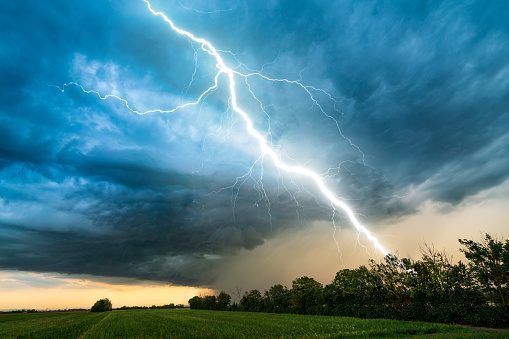An example from nature is the turbulent convection caused by temperature differences within the Earth’s atmosphere. Turbulent convection is characterized by a featureless and chaotic air motion, which makes it difficult to forecast the weather over several days.
Understanding thermally driven flows
In recent years, the existence of prominent large-scale and long-living convection patterns was reported [1], [2]. These so-called superstructures dominate the global heat and mass transport and can cause extreme fluctuations in the flow. Do these superstructures aid and abet extreme weather events? This is still poorly understood.
At the Institute of Thermo- and Fluid Mechanics at Technische Universität Ilmenau in Germany, scientists are researching thermally driven flows. The group investigates the size and the dynamics of large-scale patterns and vortices evolving in those flows using numerical and experimental approaches.
Simultaneous measurements of temperature and velocity fields
The Rayleigh-Bénard cell is often used for experiments. This model experiment lets the scientists induce a thermally driven convection under well-known boundary conditions by heating and cooling the bottom and the top plate, respectively. If a high-temperature difference arises between the plates, a turbulent fluid flow evolves inside the cell, which exhibits similar characteristics in time and space as present in the flows in the earth’s atmosphere.
Besides numerical simulations, the group carried experiments out to gain detailed knowledge about the origins and dynamics of superstructures. To determine their influence on heat and mass transport, it is necessary to perform simultaneous measurements of velocity and temperature distributions. For this, the group uses thermochromic liquid-crystals (TLCs) as tracer particles.
The temperature distribution can be determined by the color of the TLCs when they are illuminated with white light. The velocity distribution can be evaluated by determining their movement within the fluid when applying Particle Image Velocimetry (PIV).
In addition to novel evaluation methods, e.g. based on neural networks [3], significant technological advances in supercontinuum lasers may boost experimental investigations on turbulent convection, as these light sources provide intense and spatial coherent white light laser beams that enable simultaneous measurements of temperature and velocity with very high spatial resolution [4].
Experimental set-up with a SuperK laser and a Rayleigh-Bénard convection cell
The group set up an experiment consisting of a small cylindrical Rayleigh-Bénard cell filled with water (see Fig. 1 below) to investigate the simultaneous measurement of velocity and temperature fields using white light lasers. A supercontinuum laser (SuperK FIANIUM, NKT Photonics) coupled with an optical short pass filter (SuperK SPLIT, NKT Photonics) was used for white light illumination of suspended TLCs by generating a 500 nm thin light sheet.

The experiments demonstrated reliable two-dimensional measurements of velocity and temperature distributions within the Rayleigh-Bénard cell. Compared to other white light sources of incoherent nature, the use of the supercontinuum laser offers a much higher spatial resolution, promising detailed experimental investigations of turbulent thermal convection, even in large Rayleigh-Bénard cells needed for the study of turbulent superstructures.
Visualization of velocity and temperature fields
In the below video, you see how a white light laser (SuperK FIANIUM, NKT Photonics) illuminates – from the left – thermochromic liquid crystals (TLC of type R20C20W, LCR Hallcrest) suspended in water inside a Rayleigh-Bénard cell.
The TLCs act as both tracer particles and temperature sensors. While particle displacement is determined by applying Particle Image Velocimetry (PIV), the temperature of the TLCs is obtained by evaluating their reflected color.
Please note that the color scheme is counter-intuitive: Cold plumes of red color descend while hot plumes of blue color rise.
More from the group on Experimental Thermal and Fluid Science.
References
[1] S. Emran, J. Schumacher, Large-scale mean patterns in turbulent convection, J. Fluid Mech. 776 (2015) 96–108.
[2] Pandey, J.D. Scheel, J. Schumacher, Turbulent superstructures in Rayleigh-Bénard convection, Nat. Commun. 9 (2018) 2118.
[3] Moller, C. Resagk, C. Cierpka, On the application of neural networks for temperature field measurements using thermochromic liquid crystals. Exp Fluids 61, 111 (2020).
[4] König, S. Moller, N. Granzow, C. Cierpka, On the application of a supercontinuum white light laser for simultaneous measurements of temperature and velocity fields using thermochromic liquid crystals, Exp Therm Fluid Sci 109:109914 (2019).



